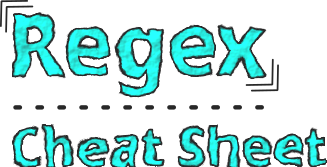Regex Cheat Sheet - Regular Expressions Tutorial
 Emre Kanbay
Emre Kanbay
This blog post is firstly published on my personal blogging site kanby.net
TL;DR
Most common regex patterns
Examples of regex patterns
Most Common Patterns
Important:
a x bin this exampleais preceeding by x andbis followed by x
^means start of each line in string$means end of each line in string()groups spesific pattern(?:)means this pattern will match in string BUT will not return it. Eg. A phone number regex pattern must include country code but does not have to extract that part even though it must match on string.[]matches specified single character, eg.[abc]will macth a or b or c. Ranges are supported too[a-c]will match same.[^]matches every character except specified ones.matches any single character*0 or more of the preceding element+1 or more of the preceding element?0 or 1 of the preceding element{n}Exactly n occurrences of the preceding element.{n,}n or more occurrences of the preceding element.{n,m}Between n and m occurrences of the preceding element\dany digit\Dany non-digit\wany word character (alphanumeric + underscore)\Wany non-word character\sMatches any whitespace character\SMatches any non-whitespace character\escape character, eg. İf you want to find.(which is a special character) in your string, you need to do this\.
With combining these, you can create highly complicated pattern match/extraction functions with Regex.
Examples
\^[a-z_]+\.com$\will match .com domains[a-z_]means characters from a to z and underscore+means at least one of them\.means period (.)comis for just com^and$is for searching from start of strin to end of each line
^[a-zA-Z0-9._%+-]+@[a-zA-Z0-9.-]+.[a-zA-Z]{2,}$will match emails
^Asserts the start of the string.[a-zA-Z0-9._%+-]+Matches one or more characters that can be:Letters (a-z, A-Z)
Digits (0-9)
Underscores (_)
Dots (.)
Percent signs (%)
Plus signs (+)
Hyphens (-)
@Matches the "@" symbol, which is mandatory in all email addresses.[a-zA-Z0-9.-]+Matches one or more characters for the domain name, allowing:Letters (a-z, A-Z)
Digits (0-9)
Hyphens (-)
Dots (.)
\.Matches a literal dot (.) separating the domain name from the top-level domain (TLD).[a-zA-Z]{2,}Matches the top-level domain (TLD) consisting of at least two letters (e.g., .com, .org).$Asserts the end of the string.
If you have any questions, Here is my Instagram @emrekanbay.en
Subscribe to my newsletter
Read articles from Emre Kanbay directly inside your inbox. Subscribe to the newsletter, and don't miss out.
Written by

Emre Kanbay
Emre Kanbay
A chemical engineering student who likes to code